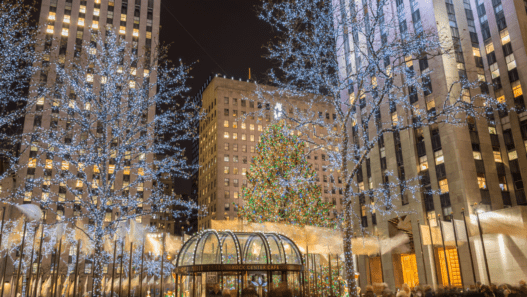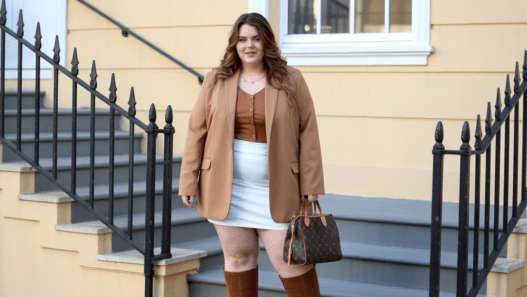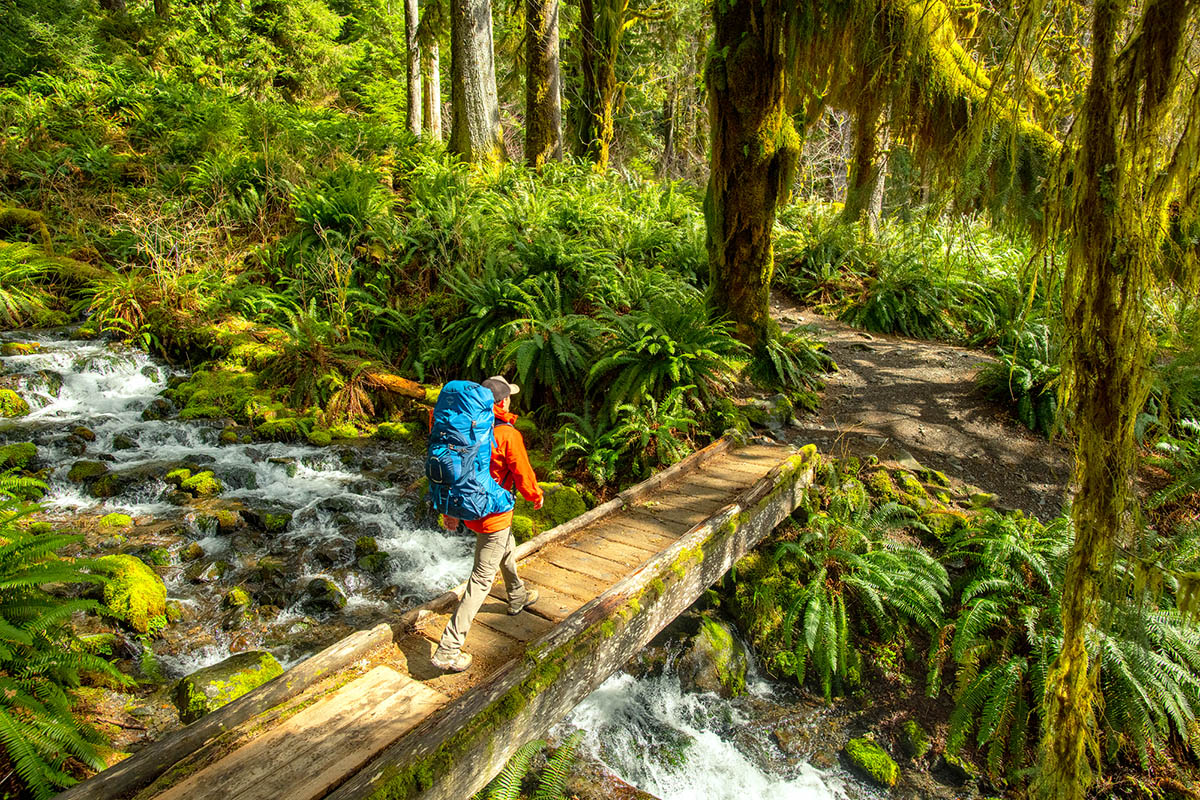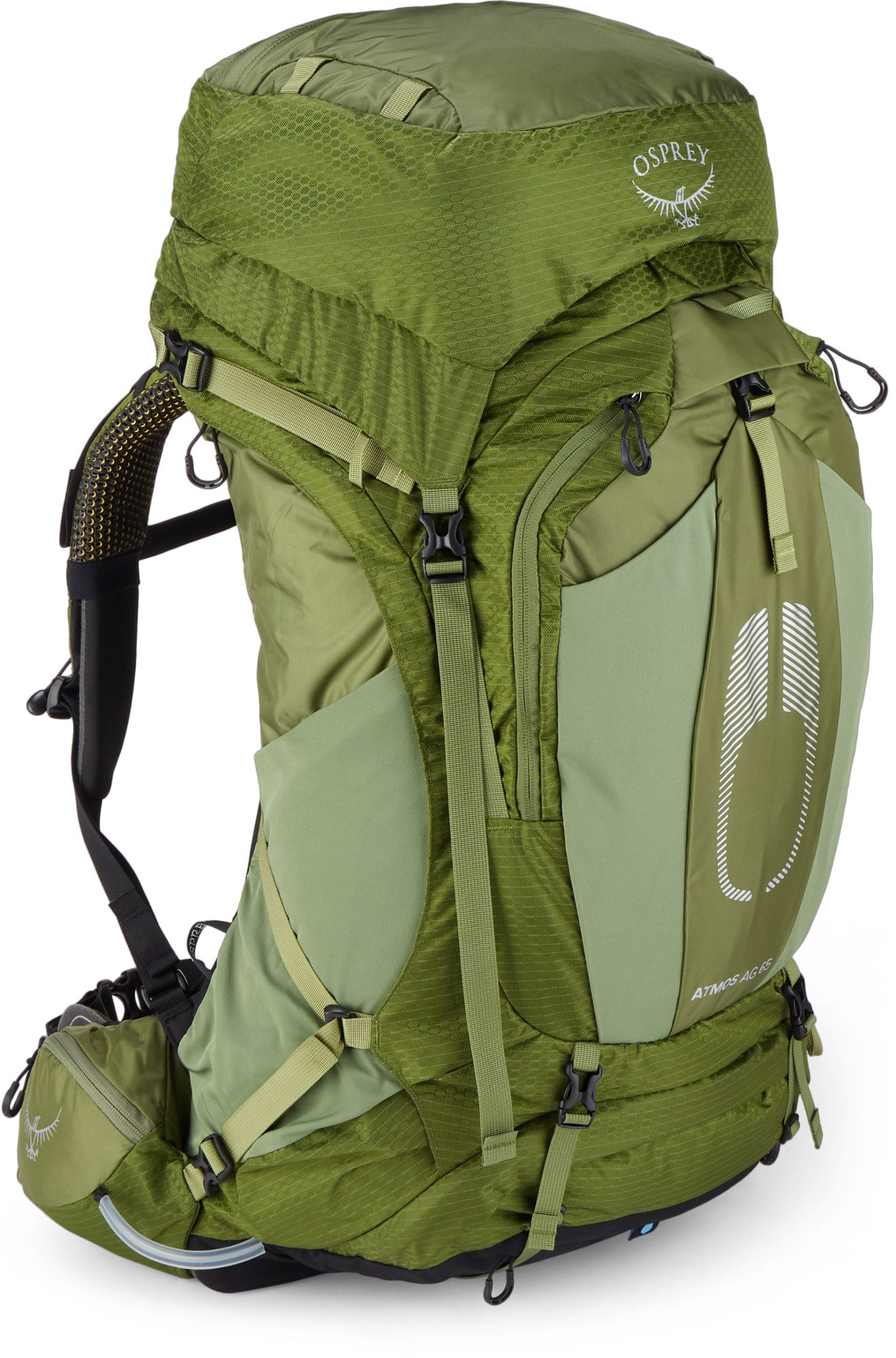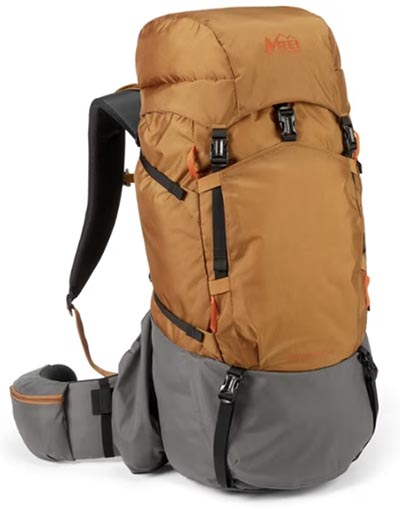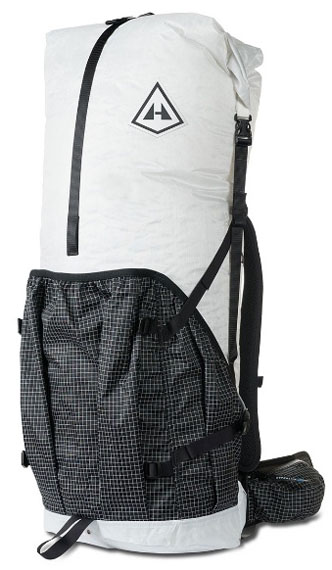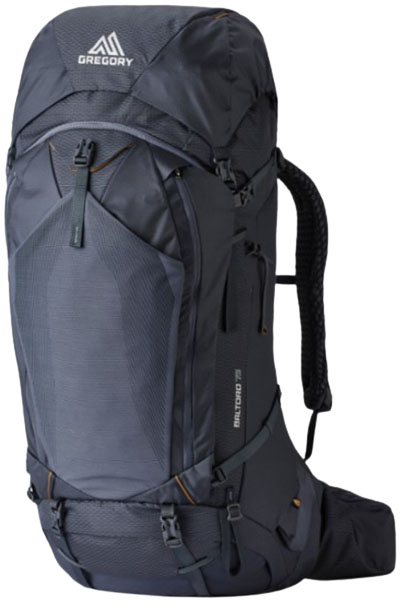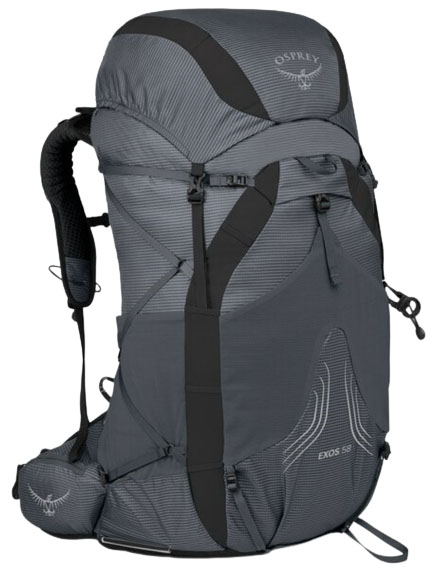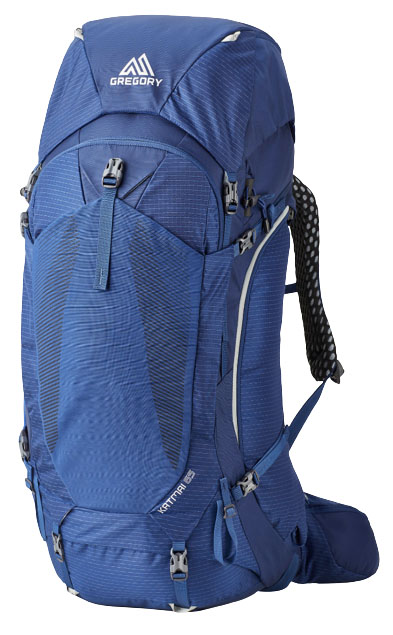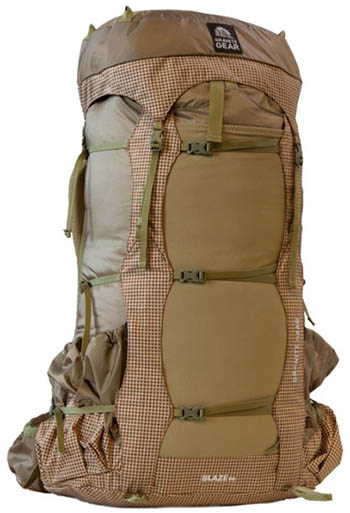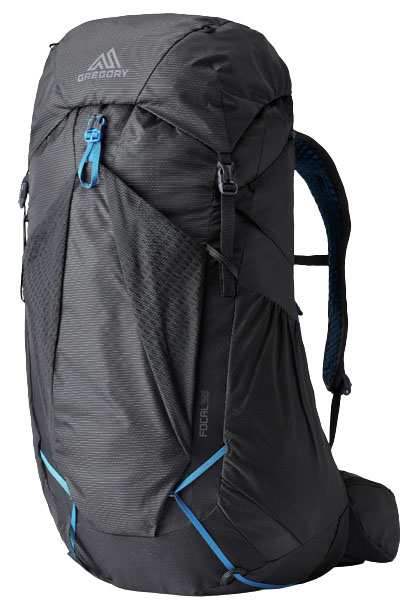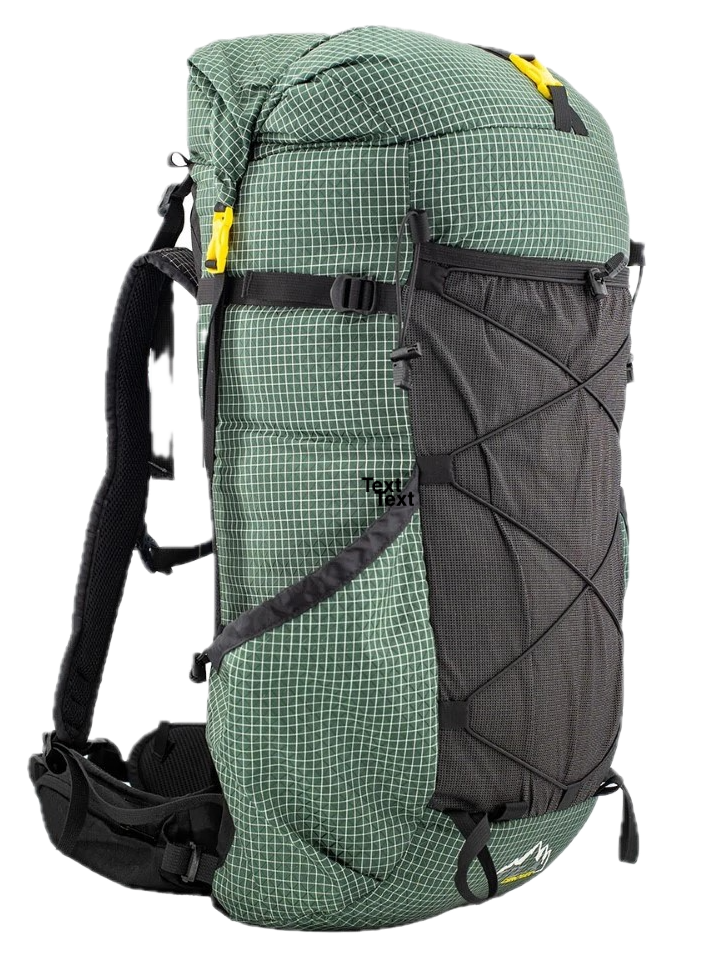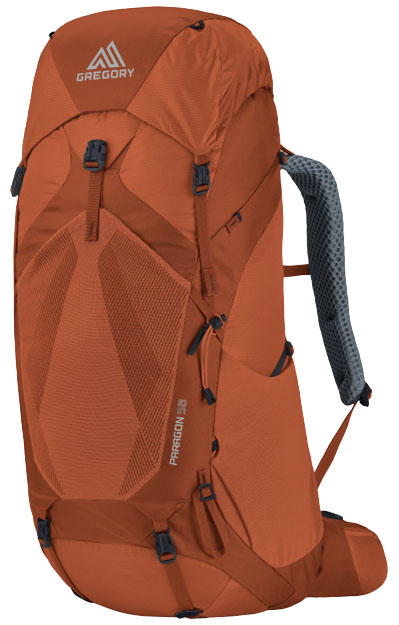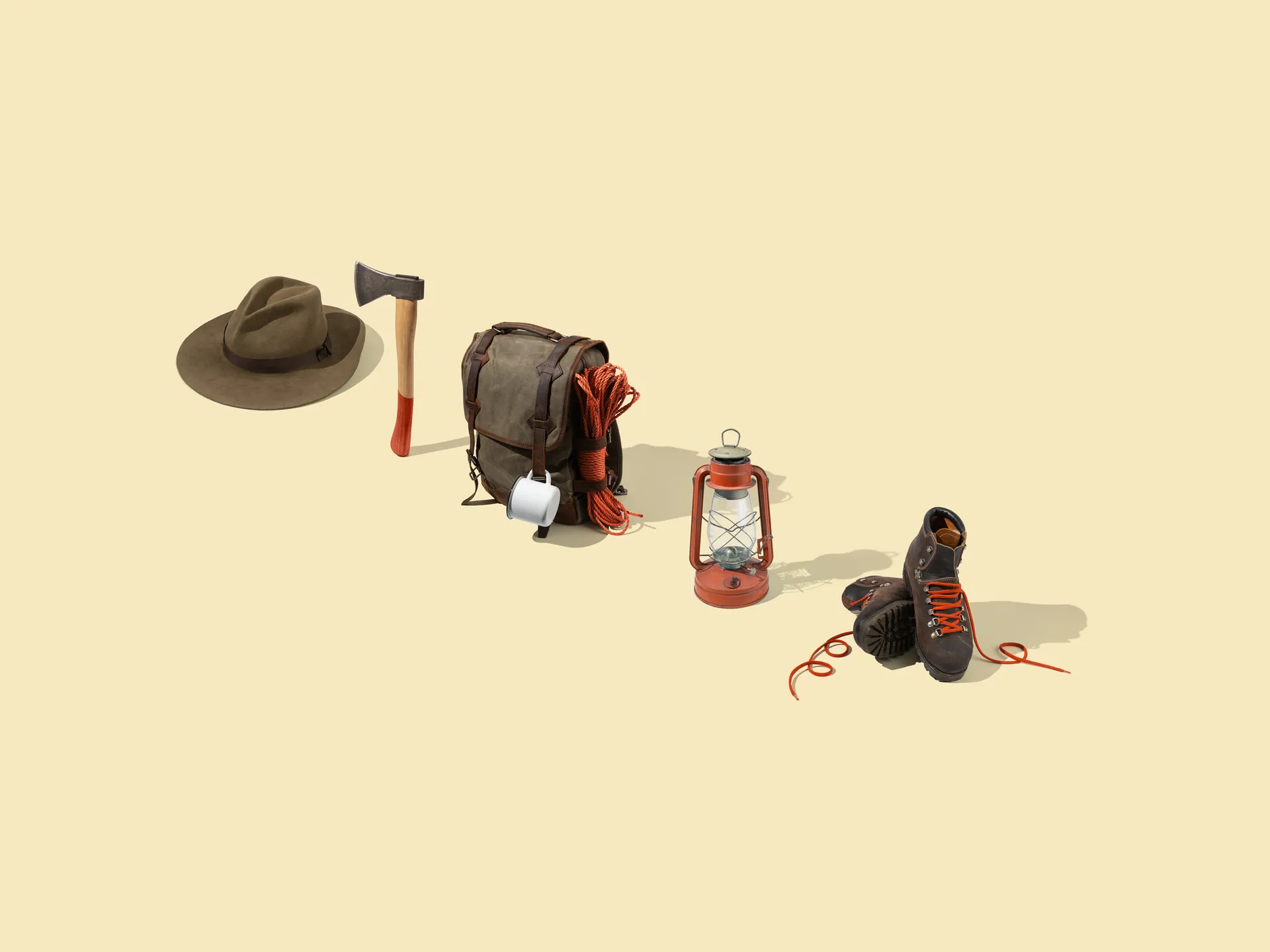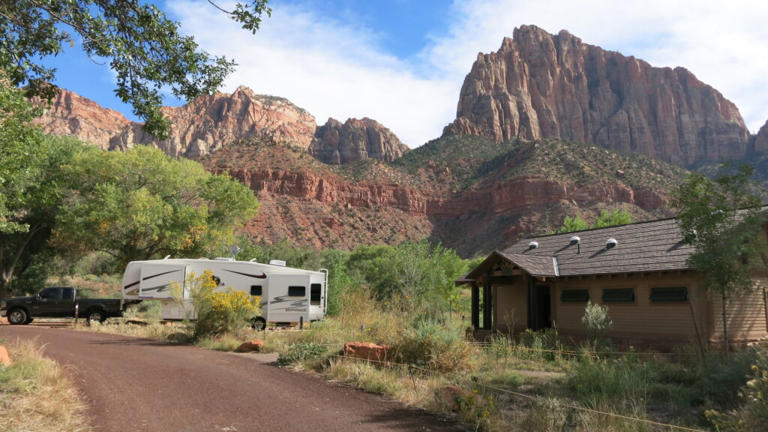Gone are the days when backpacking consisted of strapping on a huge external frame and lumbering through the forest with an aching body. Trends in backpacks these days err towards minimalism and thoughtful, ergonomic design. From the lofty, moss-strewn trails of the PNW in the United States to the dusty, blistering heat of the African savannah, the Switchback Team shouldered countless backpacks over just as many miles through all sorts of terrain to narrow in on the list of 19 worthy models below. These are our favorite backpacking backpacks for 2024, from ultralight bags for minimalists and thru-hikers to comfort-oriented options for weekend warriors and extended trips. For background information, see our backpack comparison table and buying advice below the picks.
Best Overall Backpacking Backpack
1. Osprey Atmos AG 65 ($340)
Weight: 4 lb. 9.8 oz.
Fabric: Nylon (210D x 500D)
Capacities: 50, 65L
What we like: A standout all-rounder with especially great ventilation.
What we don’t: Pricey and fairly heavy at over 4.5 pounds.
The Atmos AG (and women’s Aura AG) is our top backpacking backpack of the year, deftly balancing comfort, organization, and durability. The attention grabber is the “Anti-Gravity” suspended mesh backpanel, which replaces the protruding foam found on more traditional designs to maximize both ventilation and comfort. But that’s not all the Atmos has going for it: The pocket design is thoughtfully laid out with plenty of options to divvy up gear, the Fit-on-the-Fly harness and hipbelt offer an easily customizable fit, and the premium materials hold up well to rough treatment. Overall, the Atmos is an extremely well-rounded backpack that works great for anything from quick overnight trips to extended jaunts into the backcountry.
With a revamp in the spring of 2022, the most recent Atmos tacks on two side zips for more convenient access to the main compartment, a torso length adjustment, and an integrated rain cover. Osprey also modified the pack’s fabrics to prioritize sustainability (like a lot of gear manufacturers, they’ve moved to a PFC-free durable water repellent finish). Subsequently, the Atmos AG 65 also got a price bump, which surprisingly makes it even pricier than the souped-up Aether below. But you won’t find a better balance of weight, carrying comfort, and features for everything from quick overnight missions to week-long backpacking trips, once more earning the Atmos AG 65 a spot at the top of our list. It’s also worth mentioning Osprey’s Atmos AG LT 65 ($290; 4 lb. 1 oz.), which streamlines the design but still offers the same comfort and carrying capacity of the original pack.
Best Budget Backpacking Backpack
2. REI Co-op Trailmade 60 ($179)
Weight: 3 lb. 6 oz.
Fabric: Nylon
Capacity: 60L
What we like: Decent performance for just $179; sizing is very adjustable.
What we don’t: Cheap materials and budget-feeling fit and finish.
For value seekers or those just dipping their toes into backpacking, REI’s in-house collection is a really nice place to start. The Trailmade 60 is far from the most premium pack we’ve tested—in fact, it carries the vibe of a 90s-era hauler—but it certainly gets the job done. We found the suspension to be relatively comfortable on a challenging overnight trip, and organization was good with a roomy main compartment, dedicated sleeping bag storage, and six external pockets. For just $179, the Trailmade 60 is an excellent pick for beginners or those who get out just a few times a year.
What do you give up by choosing REI’s entry-level pack over the pricier options on this list? In short, the fit and finish are what one would expect from a $179 pack—materials are obviously cheap, the shove-it pockets don’t stretch as well as mesh alternatives, and we expect the squishy foam on the hipbelt, shoulder straps, and backpanel to lose its soft feel fairly quickly. Additionally, the one-size-fits-most torso adjustment (two hipbelt sizes are offered that accommodate S to 4XL) results in a less tailored feel compared to packs that are made in multiple sizes. On the other hand, this adjustability makes this pack a great one to share. Summed up, if you’re a new or casual backpacker in the market for a no-frills pack, the REI Trailmade 60 gets our nod as the best budget design of the year.
Best Ultralight Backpacking Backpack
3. Hyperlite Mountain Gear Southwest 55 ($379)
Weight: 1 lb. 15.6 oz.
Fabric: Dyneema (50D & 150D)
Capacities: 40, 55, 70L
What we like: Impressively light but strong and can carry a full load.
What we don’t: Expensive and minimal organization.
A number of ultralight packs are designed for thru-hikers and minimalists, but our top pick is the Hyperlite Mountain Gear Southwest 55. What sets the Southwest apart is its fully Dyneema construction, which offers incredible strength and water resistance at a very low weight. Ounce-counters won’t find a more streamlined yet hardwearing design, and compared to the Zpacks Arc Haul Ultra below (another popular UL pack), the thicker body fabric (5.0 oz/sq yd vs. 3.3 oz/sq yd) offers significantly more durability. Tack on a firm foam backpanel and aluminum stays, and the Southwest handles heavy loads with relative ease. For the whole enchilada at just a smidge under 2 pounds, it’s no wonder it’s one of the most popular UL packs on the trail. And Hyperlite offers a range of other options, with the primary difference being the external pocket fabric—the Windrider, for example, has mesh pockets and is a great choice for those who want to dry gear out on the go.
At 55 liters, the Southwest (which also comes in 40 and 70L versions) has the capacity to take on seriously long trips and has become a go-to pack for thru-hikers. In our hands, it has seen duty as an overnight and multi-day backpacking pack as well as a packrafting dry bag. The design is undeniably basic, with only the main compartment and a few exterior pockets for organization, and the Dyneema-lined backpanel falls short in terms of breathability. But the Southwest is still one of the most uncompromised options available, and there’s no denying the trail style you get with that premium Dyneema white. Finally, it’s also worth mentioning Hyperlite’s Unbound 55 ($399), which is a touch lighter, less torpedo-like, and offers a few more features (including external daisy chains, stretchy pockets, and a removable, reverse-pull hipbelt), but gives up a little support with just a single stay (compared to the Southwest’s two).
Our Favorite Pack for Hauling Heavy Loads
4. Gregory Baltoro 75 ($360)
Weight: 4 lb. 15.7 oz.
Fabric: Nylon (210D & 420D)
Capacities: 65, 75L
What we like: Heavy hauling comfort with a great feature set.
What we don’t: Pretty heavy and overkill for minimalists.
Gregory has earned a reputation for comfort over the years, and their flagship men’s Baltoro and women’s Deva packs carry on the tradition. These bags are intended to haul heavy loads with strong suspensions, firm but supportive padding, and excellent organization. With a fully mesh backpanel, the most recent version is the best-ventilated iteration yet, and the hip-hugging suspension and pivoting shoulder straps keep the pack stable when hiking over uneven terrain. We also appreciate the generous storage layout for shuttling multi-day loads, including nine exterior pockets, U-shaped front access to the main compartment, and massive hipbelt pockets (made even larger in the latest update) that easily swallow a large smartphone.
We tested the revamped Baltoro 75 while trekking in Patagonia, and the pack stayed true to its intentions as one of the most comfortable and feature-rich designs on the market. Along with the changes outlined above, the latest version also includes a highly customizable hipbelt and shoulder straps (great for achieving a perfect fit), drops the built-in Sidekick daypack (not a big loss, in our eyes), and uses more recycled materials. But as before, the Baltoro’s biggest downside is its weight: The 75-liter model clocks in around 5 pounds, which is about twice the heft of the 70-liter Hyperlite Southwest. In short, if you aim to keep things light and simple on a backpacking trip, this probably isn’t the pack for you. But if you plan to carry 40 pounds or more, the Baltoro will shoulder the load better than most—and chances are you won’t notice the extra pound or two.
Best Balance of Comfort and Lightweight
5. Osprey Exos 58 ($260)
Weight: 2 lb. 13.4 oz.
Fabric: Nylon (100D & 400D)
Capacities: 38, 48, 58L
What we like: Excellent mix of carrying comfort, ventilation, and build quality at a reasonable weight.
What we don’t: Heavy and overly complicated for many minimalists and thru-hikers.
Osprey is a backpack powerhouse known for quality builds, excellent organization, and comfort, as seen in industry-leading designs like the Atmos/Aura above. First released over a decade ago, the Exos (and women’s Eja) was their original take on an ultralight pack and remains a popular pick in this category. At 2 pounds 13.4 ounces for the 58-liter version, it can’t compete with streamlined haulers like the Hyperlite Southwest above or Gossamer Gear Mariposa below (both of which check in just under 2 lb.), but the additional weight translates to a boost in organizational features, carrying comfort, and ventilation. And with a spring 2022 update, the most recent Exos tacks on a convenient torso-length adjustment and reintroduces hipbelt pockets to the design (surprisingly, these had been removed in the previous version).
If you’re accustomed to a traditional backpack but curious about dipping into the ultralight world, we think the Exos is one of the best places to start. With a robust suspension system and practical feature set, this pack isn’t a true UL design, but it’s nevertheless significantly lighter and more streamlined than a pack like the Atmos above. And held up against the similarly intentioned Gregory Focal below, the Exos boasts a few more bells and whistles (including the adjustable torso length) and features a slightly more plush backpanel. You do trade a bit of durability compared to burly traditional haulers or pricier ultralight designs (which generally use Dyneema or tough Robic nylon), but we’ve been surprised with how well the Exos’ 100-denier body and base have held up. For an even more streamlined option from Osprey, check out the Exos Pro 55 ($290), which weighs just 2 pounds 1.2 ounces and is becoming a quick favorite among thru-hikers and minimalist backpacks willing to take a deeper dive into the UL space…
Best Plus-Size Backpacking Backpack
6. Gregory Katmai 65 Plus Size ($310)
Weight: 5 lb. 0 oz.
Fabric: Nylon (210D & 420D)
Capacity: 65L
What we like: Thoughtful and adjustable design built specifically for plus-size backpackers.
What we don’t: Only one capacity and color option.
Up until very recently, it’s been difficult (if not impossible) to find backpacking gear in plus sizes, which has excluded many from enjoying the outdoors. Gregory was one of the first companies to right this wrong, offering their fully featured Katmai 65 (and women’s Kalmia 60) in two plus sizes. The Katmai 65 Plus Size features extended-length straps, a fully adjustable torso length and hipbelt, and places the hipbelt pockets right at the hips where they belong. Gregory states that the two Plus Size offerings accommodate those who typically fit 2X to 6X clothing, and you can read more about their sizing here.
We were happy to see that Gregory chose the Katmai to bring to their plus-size audience, as it’s one of the most comfortable, fully featured, and durable packs in their lineup. Its padded, rotating harness moves with your body over rocky and rooted trails, and the suspended mesh backpanel keeps air flowing on hot days. Top, side, and bottom access to the main compartment makes it easy to locate items inside, and a front zippered pocket with a mesh divider is a great place for odds and ends. And while Gregory specifies a 45-pound load limit, our tester found that the Katmai deftly distributed the weight of 50 pounds of gear. Finally, if you’re comparison shopping, it’s also worth checking out the Extended Fit versions of Osprey’s Aether and Ariel, which offer similar sizing and features..
Best of the Rest
7. Granite Gear Blaze 60 ($300)
Weight: 3 lb. 0 oz.
Fabric: Robic nylon (100D & 210D)
Capacity: 60L
What we like: Excellent mix of carrying comfort, organization, and weight.
What we don’t: Durability and back ventilation can’t match the Atmos AG above.
The Blaze 60 is Granite Gear’s flagship piece, combining heavy-hauling credentials and functional organization at a 3-pound weight. We took the pack on a difficult trek through the Grand Canyon and were pleased with its overall performance. The pack’s sturdy frame sheet and substantial padding on the hipbelt and shoulder straps carried a full load extremely well (it’s rated for 50 pounds), and the zippered opening to the main compartment made it easy to access our gear. Further, the oversized front and side exterior pockets are extremely functional (you can fit two standard water bottles in one side pocket). Most impressively, the Blaze pulls this off while undercutting most of the competition by a pound or more.
What’s not to like with the Blaze 60? The padded backpanel favors comfort and support over breathability, and we found it to be stiffer and warmer than a mesh-heavy design like the Atmos above. Moreover, it takes some practice (and patience) to get the shoulder straps and hipbelt adjusted. In particular, reaching behind the frame sheet to remove and reinsert the shoulder strap clips was a pain. But these are small nitpicks, and the Blaze’s well-rounded build makes it one of our favorite packs on the market…
8. Gregory Focal 58 ($250)
Weight: 2 lb. 10.4 oz.
Fabric: Nylon (100D & 210D)
Capacities: 48, 58L
What we like: If it fits, this is a strong alternative to the Exos above.
What we don’t: No torso length adjustment.
Replacing the well-loved Optic, Gregory’s Focal (and women’s-specific Facet) highlights the brand’s premium ethos in an ultralight package. The pack drops weight with stripped-down features and simple organization, but comfort remains a priority: The body-hugging hipbelt, lightweight aluminum frame, and full mesh backpanel offer significantly more support than the streamlined suspension systems typically found on minimalist packs. You’ll still want to make sure the rest of your gear is appropriately pared down—especially if you’re opting for the 48-liter version—but the good news is there’s no shortage of ultralight tents, sleeping bags, sleeping pads, and other UL gear to choose from.
The Focal goes head-to-head with Osprey’s Exos above, which is the long-standing favorite in this category. Both packs come in 48- and 58-liter versions (the Exos is also available in a 38L option) and check in around the same price (the Exos is $10 more for the 58L). But the Focal is lighter by a few ounces, carries just as well, and features a simpler design that’s a bit easier to pack. The potential hangup, however, is that the Gregory lacks any torso adjustability. This isn’t especially noteworthy compared to ultralight designs—packs like the Hyperlite Southwest also feature fixed torso lengths—but it’s an undeniable shortcoming compared to the Exos. Gripes aside, if the Focal fits (it’s available in three sizes), it’s an excellent option for weight-conscious backpackers looking for a step up from a true UL design.
9. ULA Equipment Circuit 68 ($300)
Weight: 2 lb. 9 oz.
Fabric: ULA 400 Robic nylon
Capacity: 68L
What we like: A thru-hiker favorite with functional organization, good comfort, and decent durability.
What we don’t: Not as water resistant as a Dyneema pack.
Utah-based ULA Equipment has gone from a relative unknown to a darling of the PCT and AT in only a few short years. Leading the charge is their 68-liter Circuit, which offers an excellent compromise of weight, durability, and functionality for the thru-hiking crowd and those who keep their loads under 30 pounds. The design is undeniably minimalist but retains good organization with a very large front mesh pocket, zippered hipbelt compartments, an internal secure stash, and generous side water bottle pockets. These pockets have been fitted with burly ULA 400 Robic nylon for added durability. We’ve taken the Circuit on multi-day treks in Patagonia and up 14ers in Colorado and have been impressed with how easy it is to load up, adjust, and even streamline as a day pack when needed.
Although the ULA Circuit doesn’t have that coveted Dyneema distinction, its 400-denier Robic nylon has proven to be very abrasion resistant and is actually less prone to punctures than the Hyperlite and Zpacks designs (in our experience, Dyneema has a greater tendency to form small holes in between the fibers). What’s more, with a carbon fiber suspension, aluminum stay, and rigid foam backpanel, the Circuit is fully capable of utilizing its generous 68-liter capacity. To top it off, the ULA is offered in an impressive range of sizes, and you can customize the torso length, hipbelt size, and shoulder strap style to meet your needs. If you’re willing to give up the water resistance, slight weight savings, and brand cachet of the Hyperlite, it’s likely you won’t be disappointed with the Circuit—and it’s a relatively good value at just $300.
10. Gregory Paragon 58 ($260)
Weight: 3 lb. 9.3 oz.
Fabric: Nylon (100D, 210D, & 420D)
Capacities: 48, 58, 68L
What we like: Well-balanced design with a useful feature set.
What we don’t: Heavier but no more comfortable than the Blaze above.
It doesn’t get much more premium than Gregory’s Baltoro above, but a strong case can be made for a more affordable and lightweight design like the Paragon. At 3 pounds 9 ounces and a reasonable $260, the Paragon 58 is a great option for smaller loads (it comes in 48, 58, and 68-liter versions) and those looking to save. You don’t get the same level of padding or organization as the Baltoro, but the pack offers easy fit adjustments, plenty of mesh along the backpanel to help you stay cool, and a quality feel overall with sturdy zippers and supportive foam. And the Paragon doesn’t skimp on useful extras either, with features like a rain cover, large mesh front pocket, and a bear canister-friendly wide shape.
With an all-rounder design that finds a nice middle ground between stripped-down UL models and heavy comfort-first haulers, the Paragon goes head-to-head with a pack like the Osprey Atmos above. But while the Gregory gets the clear edge in weight (it’s nearly a full pound lighter) and price (by $80), the Osprey is the better pack when it comes to comfort, exterior storage, and ventilation. Further, the Atmos has a higher-end feel and more durable construction with a thicker body fabric (210D x 500D vs. the Paragon’s 100D). One final note: It’s also worth checking out Gregory’s Zulu 65 ($270), which offers top-notch ventilation but (in our experience) comes up short in terms of carrying comfort…






